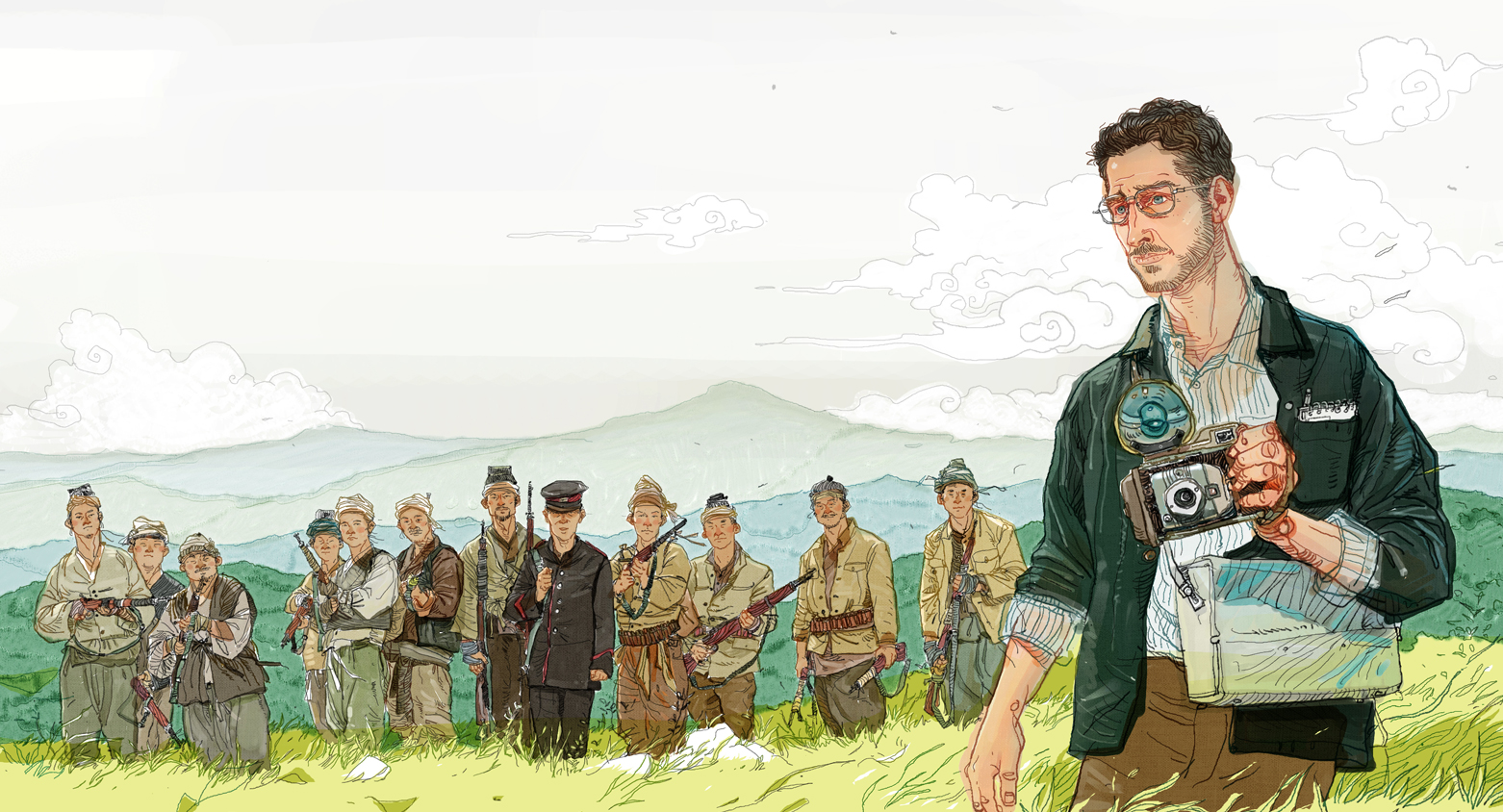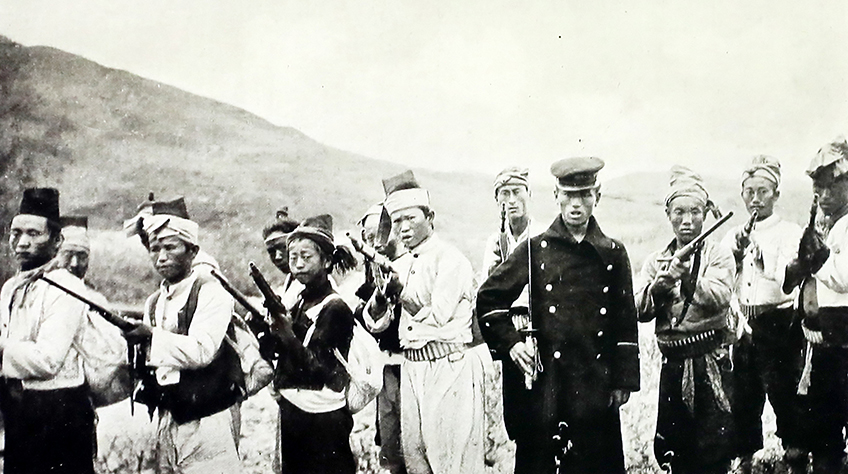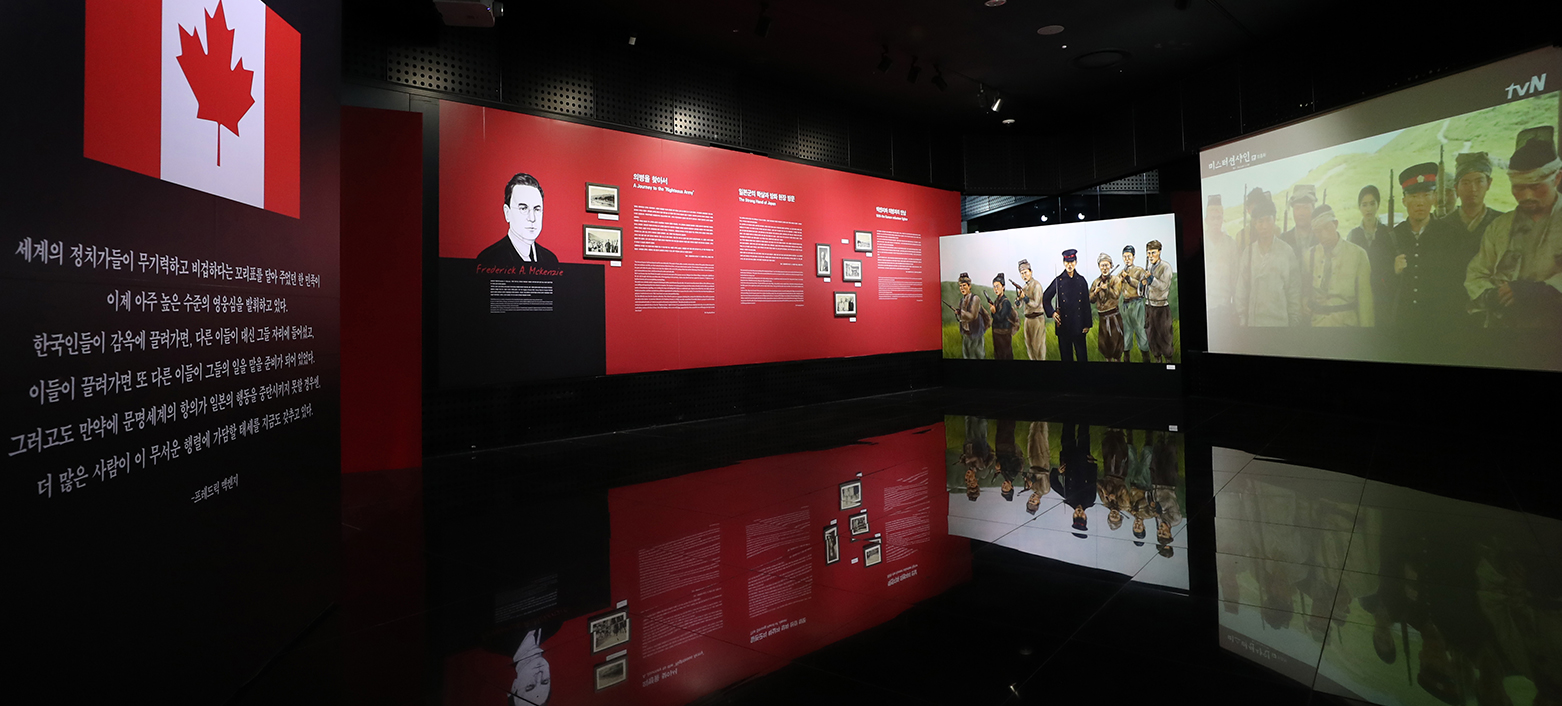
Contents










Historic Anniversary · Written by Jeon Han Illustrated by Manus Eugene
Immortalizing
‘Righteous Armies’
Through Photos
Frederick A. Mackenzie
The photos of “anti-Japan righteous armies” are shown in Korean history textbooks, and scenes from the pictures
were reenacted in the last episode of “Mr. Sunshine,” a Korean historical drama that debuted on July 7, 2018.
Frederick Arthur Mackenzie, a Canadian-born war correspondent for the London-based
newspaper Daily Mail, is believed to have taken such photos between 1906 and 1907.
He said the young people he photographed, despite having no uniforms and weapons and sensing
certain death in pursuit of their long-shot cause, exemplified what patriotism was with their sparkling eyes and smiles.
The resistance soldiers, looking young but determined in the photo, vividly attest to Mackenzie’s description.

“Sparkling eyes and smiles” are how Frederick Arthur Mackenzie (1869-1931)
described “anti-Japan righteous armies” after meeting them. A war correspondent for the
London-based Daily Mail who went to Korea after the Russo-Japanese War of
1904-05 broke out, the Canadian-born reporter and author blasted the aggression and
brutality of imperial Japan that he witnessed on the Korean Peninsula.
Mackenzie went to Britain after the end of the war but traveled to Korea again in summer 1906 to cover Japan’s plundering of the peninsula, Korea’s independence movement and the activities of the righteous armies in person, staying for one year and six months.
He later wrote The Tragedy of Korea, a 21-chapter book on the events of 1908, the Korean Empire and the process of the latter’s destruction. He described in detail imperial Japan’s atrocities on the peninsula, the suffering of Koreans and lively images of the righteous armies.
Despite Japan’s suppression and attempts to obstruct the activities of foreign journalists, Mackenzie went to Chungju, Chungcheongbuk-do Province, to see righteous army soldiers in person and heard that Japanese soldiers had burned down many villages in Icheon, Gyeonggi-do Province. He also witnessed villages with 70-80 households in Jecheon, Chungcheongbuk-do Province, left in ruins by Japanese forces on his way to Icheon.
“Once the Japanese army destroyed a village, hundreds of innocent villagers volunteered to join the righteous armies. What they wanted was to make a living quietly. At least one rich village was ruined by scorched-earth tactics and the number of righteous army forces increased as the days went by; it will take a few generations before this seed of hatred can be uprooted,” he said.

Meet Righteous Armies Despite Suppression
Mackenzie once wrote that he felt sorry for the soldiers since they had no weapons, clothing and other supplies but later said such pity was misguided.
“But as I looked, the sparkling eyes and smiles of the sergeant to the right seemed to rebuke me. Pity! Maybe my pity was misplaced. At least they were showing their countrymen an example of patriotism,” he said.
The war correspondent also quoted a righteous army general, whom he described as an “officer who led combat” and fought for a worthwhile cause, as saying, “We may have to die. Well, so be it. It is much better to die as a free man than to live as the slave of Japan.”
‘I Plead for Freedom and Justice’
Mackenzie’s second book about Korea, Korea’s Fight for Freedom, covered events in 1919, when the March First Independence Movement erupted; it was published in 1920. Starting the preface as “The peaceful uprising of the people of Korea against Japan in the spring of 1919 came as a world surprise,” he chronicled the movement in detail.
In Chapter 17 titled “Girl Martyrs for Liberty,” he wrote, “The most extraordinary feature of the uprising of the Korean people is the part taken in it by the girls and women,” blasting Japan for suppressing and committing atrocities against Koreans regardless of sex or age.
Mackenzie did not merely uses news stories and books to inform the world of Korea’s plight. He also pledged in November 1919 to do whatever he could for Korean independence through public relations activity for independence fighter Kim Kyu-sik, and later founded the organization League of Friends of Korea in London on Oct. 26, 1920.
At the group’s launching ceremony attended by 62 influential figures including 17 British parliamentarians, the dean of the University of Edinburgh, scholars, journalists, aristocrats and pastors, Mackenzie criticized Japan’s colonial policy and described Korea’s reality.

This was the Frederick A. Mackenzie section of the exhibition “Korea’s Independence Movement and Canadians” held this year from Feb. 23 through March 31 at City Gallery of Seoul Citizens’ Hall. The colorized photo of the photo “Anti-Japan Righteous Armies” was also on display next to the last episode of the Korean historical drama “Mr. Sunshine.”
Other Articles















